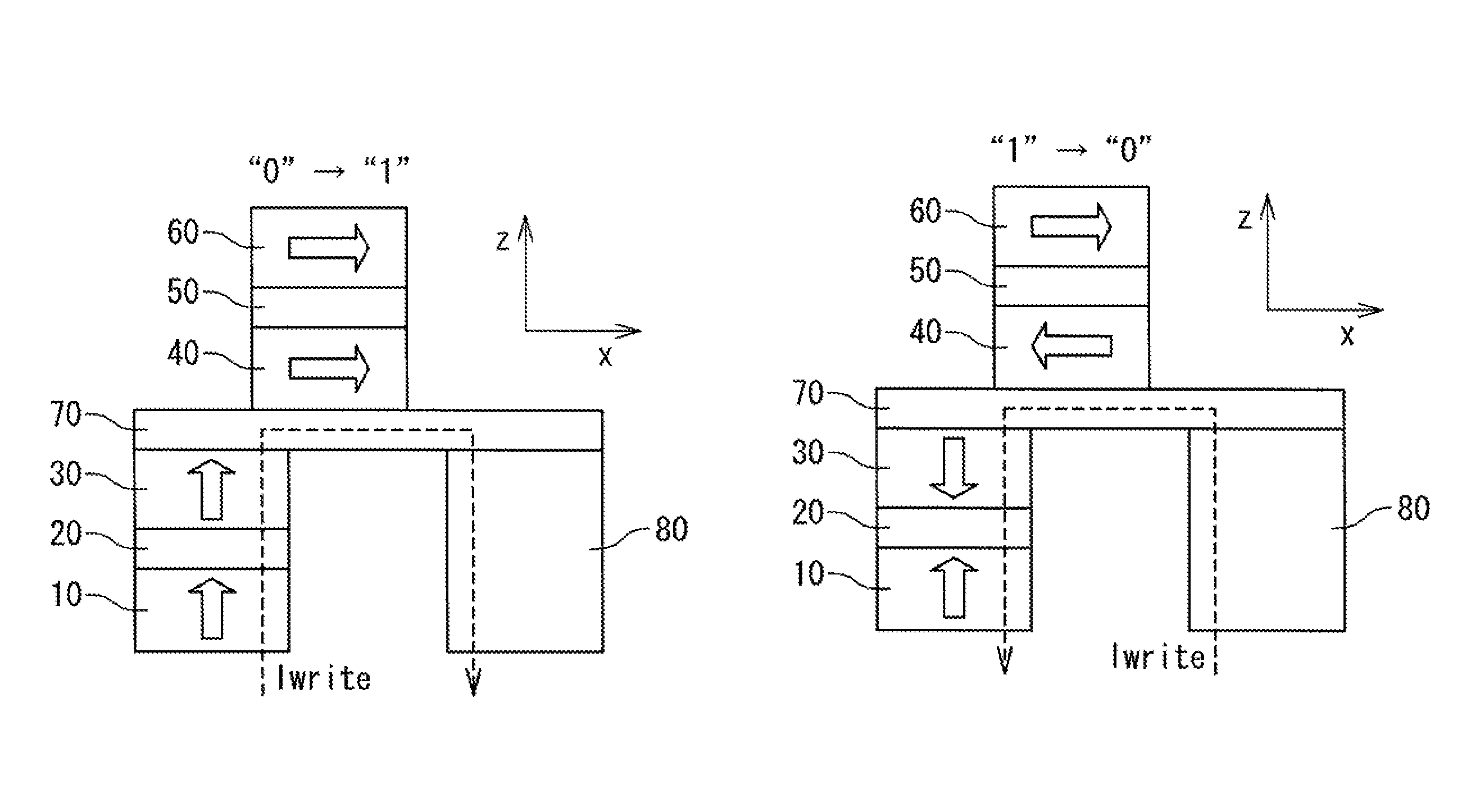Magnetic random access memory
a random access and memory technology, applied in the field of magnetic random access memory, can solve problems such as the complexity of the structure of the magnetoresistance element, and achieve the effect of suppressing the variation in the reference level, improving the write characteristics and read characteristics
- Summary
- Abstract
- Description
- Claims
- Application Information
AI Technical Summary
Benefits of technology
Problems solved by technology
Method used
Image
Examples
Embodiment Construction
[0066]A magnetoresistance element and an MRAM based on the spin transfer magnetization switching method according to an exemplary embodiment of the present invention will be described with reference to the attached drawings.
[0067]1. First Magnetoresistance Element
[0068]1-1. Configuration
[0069]FIG. 1A is a perspective view showing a structure of a first magnetoresistance element 1 according to an exemplary embodiment of the present invention. FIG. 1B and FIG. 1C respectively are a x-y plan view and a x-z side view of the structure shown in FIG. 1A. The first magnetoresistance element 3 has a stacked structure including a plurality of layers, and the stack direction is defined as the z-axis direction. A plane parallel to each layer of the stacked structure is the x-y plane.
[0070]The first magnetoresistance element 1 according to the present exemplary embodiment has a first magnetization fixed layer 10, a first spacer layer 20, a first magnetization free layer 30, a second magnetizatio...
PUM
 Login to View More
Login to View More Abstract
Description
Claims
Application Information
 Login to View More
Login to View More - R&D
- Intellectual Property
- Life Sciences
- Materials
- Tech Scout
- Unparalleled Data Quality
- Higher Quality Content
- 60% Fewer Hallucinations
Browse by: Latest US Patents, China's latest patents, Technical Efficacy Thesaurus, Application Domain, Technology Topic, Popular Technical Reports.
© 2025 PatSnap. All rights reserved.Legal|Privacy policy|Modern Slavery Act Transparency Statement|Sitemap|About US| Contact US: help@patsnap.com



